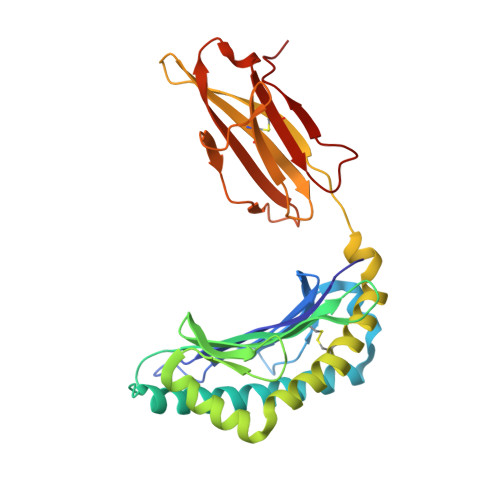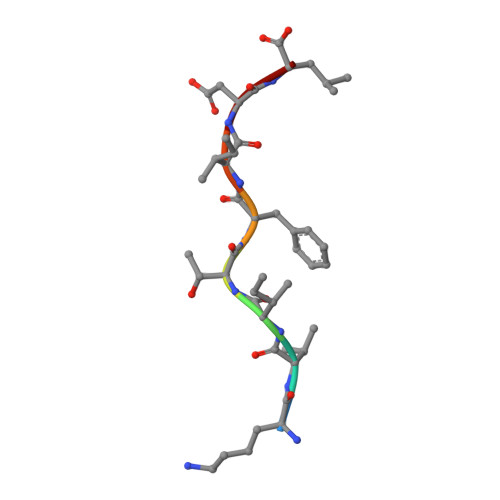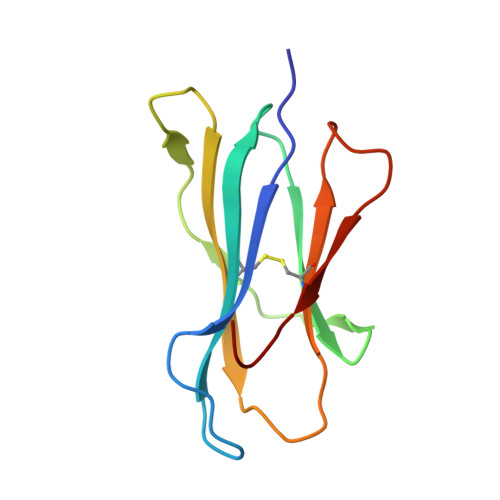A T cell receptor CDR3beta loop undergoes conformational changes of unprecedented magnitude upon binding to a peptide/MHC class I complex.
Reiser, J.B., Gregoire, C., Darnault, C., Mosser, T., Guimezanes, A., Schmitt-Verhulst, A.M., Fontecilla-Camps, J.C., Mazza, G., Malissen, B., Housset, D.(2002) Immunity 16: 345-354
- PubMed: 11911820
- DOI: https://doi.org/10.1016/s1074-7613(02)00288-1
- Primary Citation of Related Structures:
1KJ2, 1KJ3 - PubMed Abstract:
The elongated complementary-determining region (CDR) 3beta found in the unliganded KB5-C20 TCR protrudes from the antigen binding site and prevents its docking onto the peptide/MHC (pMHC) surface according to a canonical diagonal orientation. We now present the crystal structure of a complex involving the KB5-C20 TCR and an octapeptide bound to the allogeneic H-2K(b) MHC class I molecule. This structure reveals how a tremendously large CDR3beta conformational change allows the KB5-C20 TCR to adapt to the rather constrained pMHC surface and achieve a diagonal docking mode. This extreme case of induced fit also shows that TCR plasticity is primarily restricted to CDR3 loops and does not propagate away from the antigen binding site.
Organizational Affiliation:
Laboratoire de Cristallographie et Cristallogénèse des Protéines, Institut de Biologie Structurale J.-P. Ebel, CEA-CNRS-UJF, 41 rue Jules Horowitz, F-38027 Grenoble Cedex 1, France.
















